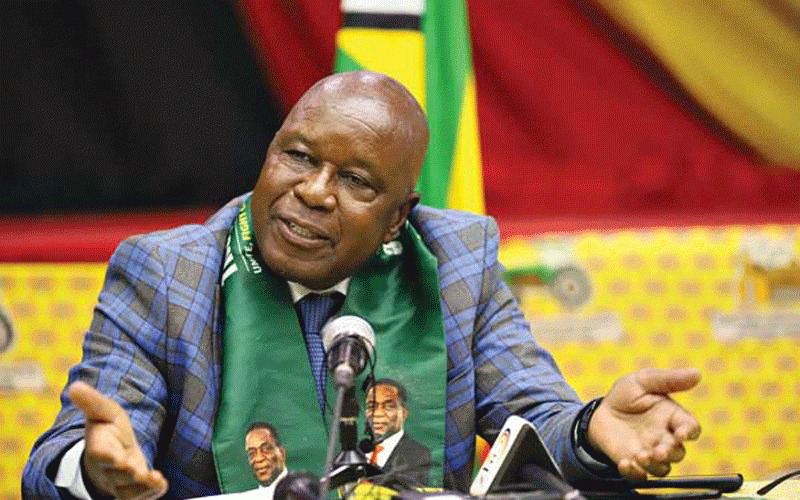
By Tapiwa Gomo
The Kazungula bridge shows what Southern Africa Development Community (Sadc) countries can achieve if they work together.
On May 10, the Kazungula bridge, a road and rail bridge over the Zambezi River between Zambia and Botswana was officially opened for traffic.
Construction of the $260 million project, which includes international border facilities in Zambia and Botswana, started in October 2014 co-financed by the Japan International Co-operation Agency (JICA) and the African Development Bank (ADB).
It was built to replace one of the largest, but old ferries in south-central Africa.
The bridge, which comes with one-stop border facility, is seen as a major development towards improving regional trade and economic integration.
Others have argued that the project is a way of avoiding the always-congested Beitbridge Border Post, bad road network in Zimbabwe and its poor management.
Whatever the case may be, this is a major milestone that deserves to be applauded and demonstrates what countries can do if they work together.
- Chamisa under fire over US$120K donation
- Mavhunga puts DeMbare into Chibuku quarterfinals
- Pension funds bet on Cabora Bassa oilfields
- Councils defy govt fire tender directive
Keep Reading
However, its construction and official opening were not without controversy, thanks to the capriciousness of Zimbabwe.
Days before the official opening were marred with confusion.
Some government officials announced that President Emmerson Mnangagwa would attend the commissioning of the Kazungula bridge amid claims that Zimbabwe was part the project.
The invitation, which bore Botswana and Zambia flags, did not suggest that Zimbabwe was attending as a co-host but as any other invited member State.
As dust settled, there was clarity on whether Zimbabwe was involved in the project or not.
We later learnt that after Botswana and Zambia initiated the idea of the project in 2001, they consulted Zimbabwe to seek its co-operation as part of the bridge would have passed through its territory.
Media reports suggested that Zimbabwe did not co-operate for several reasons and some of them political.
Zambia’s late former President Levy Mwanawasa had described Zimbabwe a “sinking Titanic” in 2007 and Botswana’s Ian Khama was condemning election violence and human rights abuses in Zimbabwe during the 2008 elections.
They were both right in their opinions but the late former President Robert Mugabe was unhappy and he sulked.
And for those negligible rebukes, Mugabe became unco-operative on a major developmental project that has potential to transform economies in the region.
A project of that nature should not have been mixed with or affected by politics.
It was a long-term project that would help generations to come.
But winning elections useing violence was prioritised by Mugabe over winning the hearts and minds of people by being part of such a major regional developmental project as the Kazungulu bridge.
There is a clear indication of where our leaders’ priorities lie — power at whatever cost.
This antithetical attitude towards progressive ideas does not only affect Zimbabwe but undermines Sadc’s objectives of regional integration and poverty eradication within the region through economic development.
For example, the cost of building the bridge increased after its length was adjusted to avoid cutting through Zimbabwe.
But then, who cares, if one knows that tollgates collections and the economic benefits override the cost of construction over the years.
Notwithstanding Zimbabwe’s attitude, the Kazungula bridge is a good example of how Sadc countries can co-operate and do more to unleash the economic potential of its member States.
Zambia can team up with Zimbabwe to rejuvenate the Kariba Power Station to supply the region.
Malawi, Mozambique and Zimbabwe can do the same at Lake Cabora Bassa.
The Cape to Cairo road project can be revived by pressuring countries along major routes to perfect their roads to regional standards.
Zimbabwe can co-operate with Mozambique and Namibia for a road that links the Indian and Atlantic Ocean ports.
South Africa can co-operate with Angola on fuel production and supply with the latter providing crude oil for purification to the former.
Angola is a major oil producing country with an output of around 1,37 million barrels of oil per day, making it the second largest producer in Sub-Saharan Africa.
On the other hand, South Africa owns Sasol company, an oil refinery company producing products such as diesel, petrol, jet fuel, liquefied petroleum gas, illuminating paraffin, bitumen and sulphur.
The missing link is that South Africa imports 85% of its crude oil from the Middle East, while the remaining 15% from the African region.
That is a distance of 7 000 kilometres, while Angola exports 80% of its crude oil to Asian countries such as China, India, Thailand and others and that is a distance of 10 500 kilometres.
Put simply, the quantities of crude oil Angola exports are almost the same as what South Africa imports from the Middle East.
It is only slightly above 2 000 kilometres between Luanda in Angola and Sasolburg in South Africa and a pipeline can be constructed between the two countries and that would see the prices of fuel doing down significantly.
Of course, to do that Sadc would need to stave off global interests in the oil industry from superpowers — but this needs to happen if the region is to develop.
Transport and energy are the baseline of any economic growth.
For countries that struggle to come up with productive economic policies, access to efficient transport and affordable energy will open economic opportunities for individual countries and regionally.











